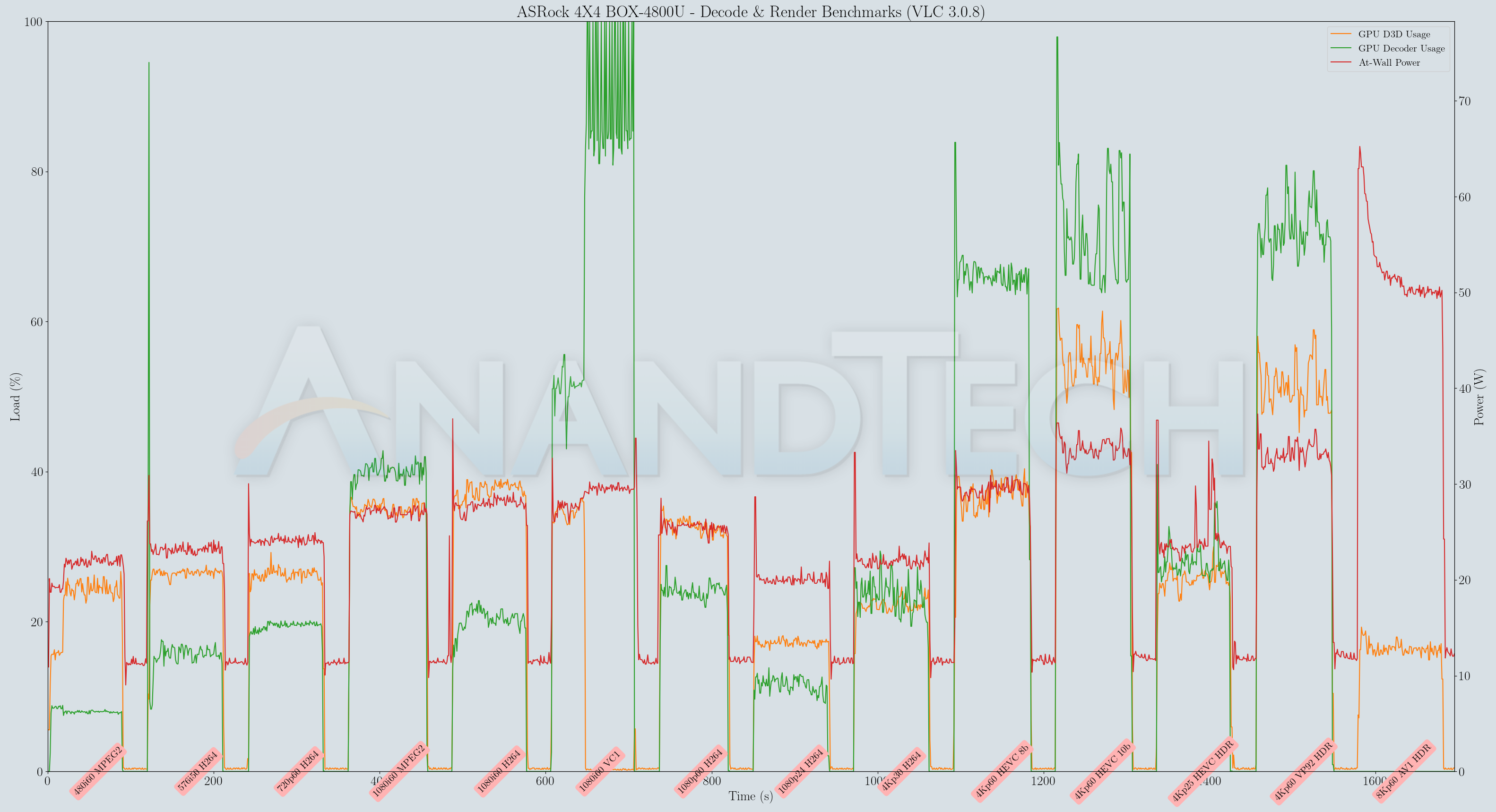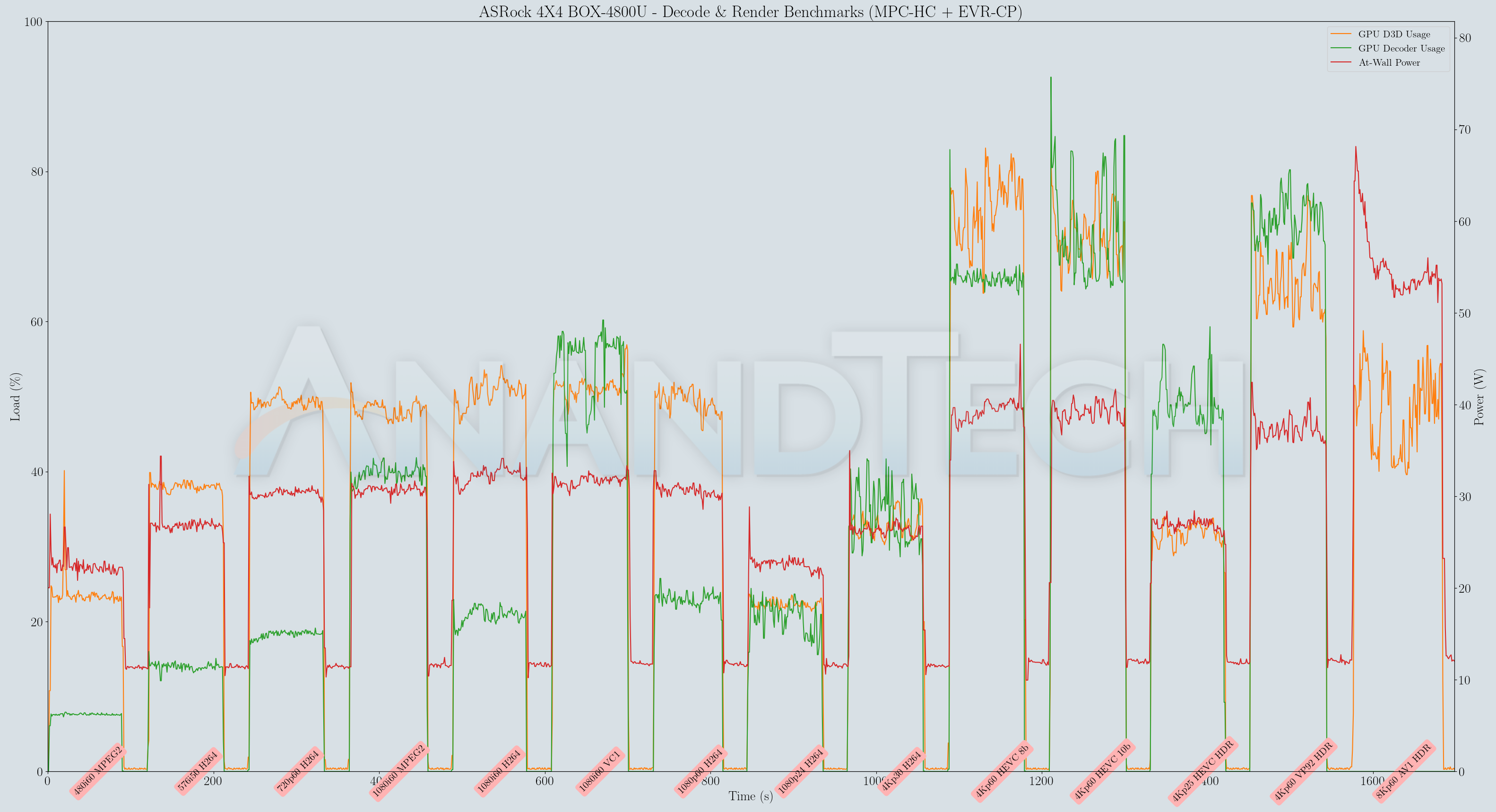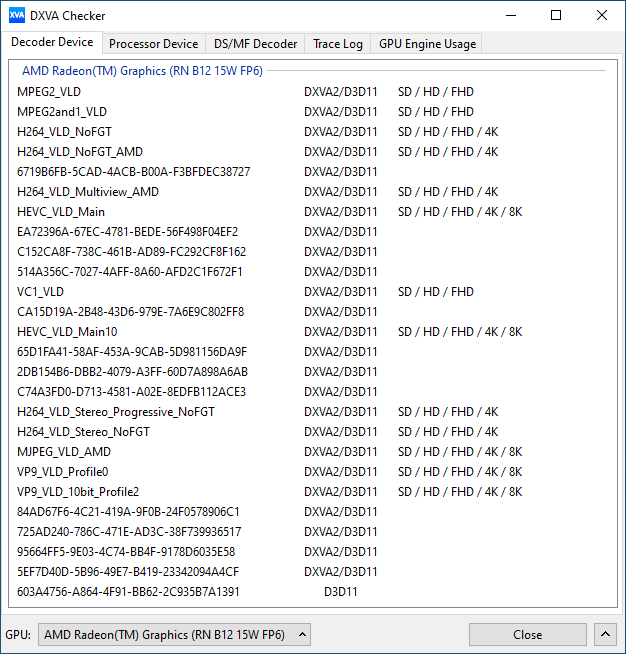ASRock Brings Zen 2 NUC : 4X4 BOX-4800U Renoir Mini-PC Reviewed
by Ganesh T S on November 25, 2020 11:00 AM ESTHTPC Credentials - II
Evaluation of local media playback and video processing is done by playing back files encompassing a range of relevant codecs, containers, resolutions, and frame rates. A note of the efficiency is also made by tracking GPU usage and power consumption of the system at the wall. Users have their own preference for the playback software / decoder / renderer, and our aim is to have numbers representative of commonly encountered scenarios. Towards this, we played back the test streams using the following combinations:
- MPC-HC x64 1.8.5 + LAV Video Decoder (DXVA2 Native) + Enhanced Video Renderer - Custom Presenter (EVR-CP)
- VLC 3.0.8
- Kodi 18.9
The fourteen test streams (each of 90s duration) were played back from the local disk with an interval of 30 seconds in-between. Various metrics including GPU usage and at-wall power consumption were recorded during the course of this playback. Prior to looking at the metrics, a quick summary of the decoding capabilities of the integrated Radeon GPU is useful to have for context.
On paper, the GPU should be able to play back all codecs with hardware acceleration (except for AV1).
All our playback tests were done with the desktop HDR setting turned on. It is possible for certain system configurations to have madVR automatically turn on/off the HDR capabilities prior to the playback of a HDR video, but, we didn't take advantage of that in our testing.
VLC and Kodi
VLC is the playback software of choice for the average PC user who doesn't need a ten-foot UI. Its install-and-play simplicity has made it extremely popular. Over the years, the software has gained the ability to take advantage of various hardware acceleration options. Kodi, on the other hand, has a ten-foot UI making it the perfect open-source software for dedicated HTPCs. Support for add-ons make it very extensible and capable of customization. We played back our test files using the default VLC and Kodi configurations, and recorded the following metrics.
| Video Playback Efficiency - VLC and Kodi | |||

VLC had trouble with the interlaced VC-1 clip, and there was no hardware acceleration for AV1. Kodi was flawless all through, though the 8Kp60 AV1 clip ended up consuming a lot of power with both players.
MPC-HC
MPC-HC offers an easy way to test out different combinations of decoders and renderers. The configuration we evaluated is the default post-install scenario, with only the in-built LAV Video Decoder forced to DXVA2 Native mode. The metrics collected during the playback of the test files using the above three configurations are presented below.

We usually attempt usage of madVR, but activating the filter resulted in some glitches. In any case, usage of madVR with integrated GPUs is not advisable. Similar to Kodi, the MPC-HC + EVR-CP combination makes good use of the hardware acceleration capabilities of the GPU to achieve satisfactory playback across all the tested codecs and resolutions. Hardware acceleration allows the system to never exceed 40W at the wall even for streams with high frame rates and large resolutions.











53 Comments
View All Comments
watersb - Saturday, December 19, 2020 - link
Thanks.The motherboard looks like PC-104, without the funky stack connector.
mars2k - Tuesday, December 1, 2020 - link
Why no Blu-Ray playback? What do they think we're supposed to do?kapqa - Friday, October 8, 2021 - link
Thank you, very informative.It would have been nice to have the Ethernet Speed&Behavious test included in the Network Capabilities Analysis.
Looking forward to see some interesting devices yet to come.